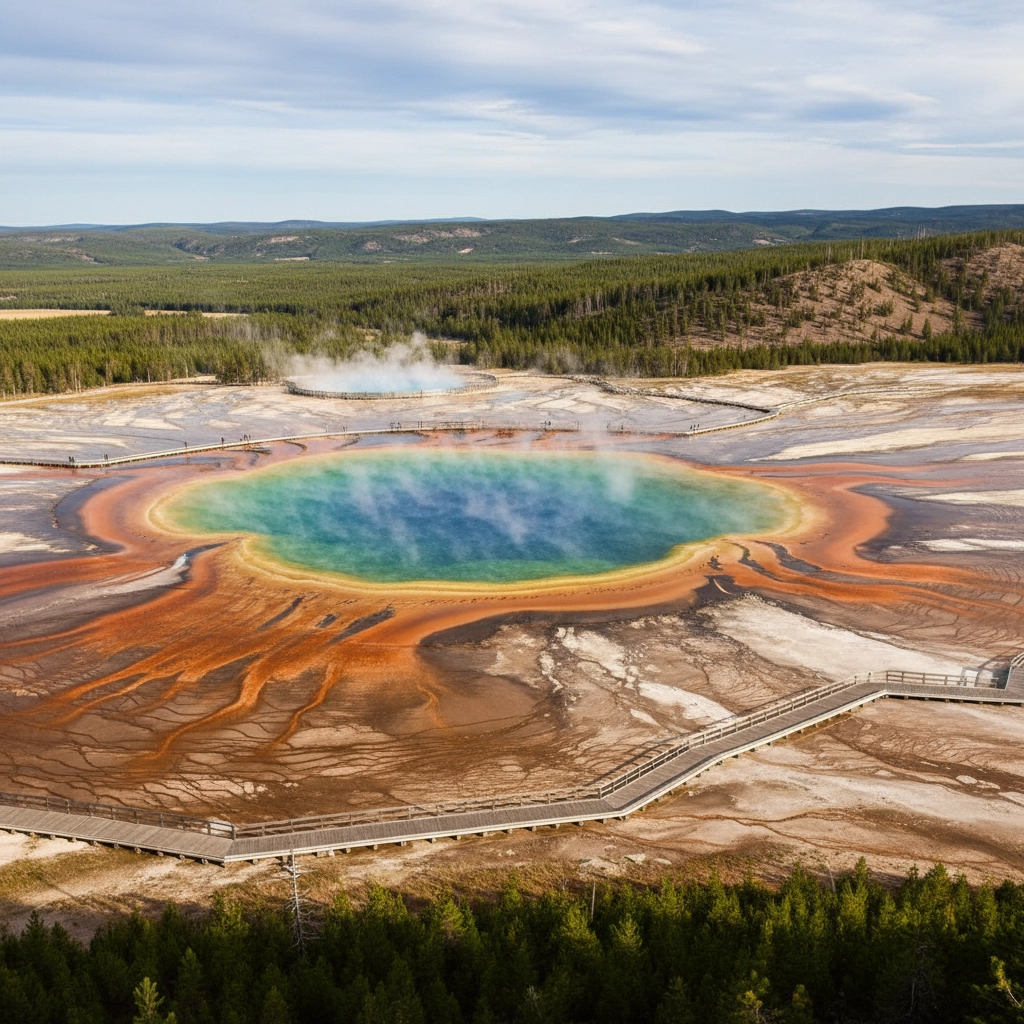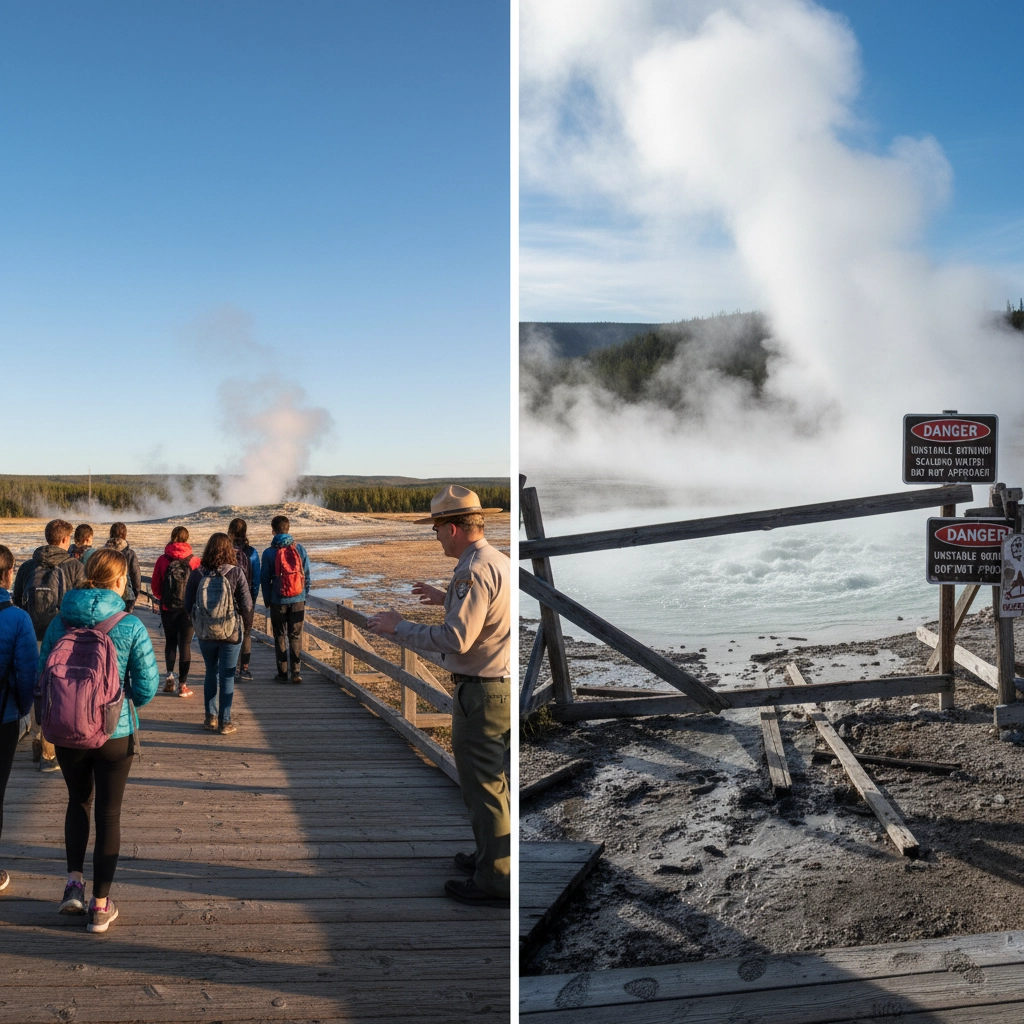7 Mistakes You are Making with Middle School Science Trips (And How Yellowstone Can Fix Them)
- Caleb Mullenix
- Oct 22
- 5 min read
Planning an effective middle school science trip requires meticulous attention to detail and strategic educational design. Yellowstone National Park, with its extraordinary geothermal features, diverse ecosystems, and geological phenomena, presents unparalleled opportunities for transformative STEM learning experiences. However, many educators unknowingly sabotage their trips through common planning oversights that diminish educational impact and compromise student safety.
Recognizing and addressing these critical mistakes will ensure your Yellowstone science expedition delivers maximum educational value while maintaining the highest standards of student supervision and engagement.
Mistake 1: Failing to Prepare Students Adequately Before Departure
The most detrimental error educators make involves surprising students with outdoor learning activities without proper preparation. Announcing "today we are going outside" transforms educational field trips into unstructured recreational time, undermining your carefully planned learning objectives and creating classroom management challenges.
Students require systematic mental preparation to transition effectively from traditional classroom learning to immersive field experiences. Without this preparation, they approach the trip with recreational rather than educational mindsets.
The Yellowstone Solution: Implement comprehensive pre-trip preparation protocols beginning weeks before departure. Provide students with structured research assignments focusing on Yellowstone's unique geological features, including geothermal activity, volcanic history, and ecosystem diversity. Create detailed activity sheets that students review the night before departure, ensuring they understand specific learning objectives and behavioral expectations.
Establish clear connections between classroom content and field observations they will make. For example, if studying plate tectonics, have students research Yellowstone's position over the hotspot and predict which geothermal features they will encounter. This preparation transforms passive tourists into active scientific investigators.

Mistake 2: Inadequate Advanced Planning and Reservation Management
Yellowstone's immense popularity creates significant logistical challenges that catch unprepared educators off guard. Accommodation reservations open precisely on the 5th of each month for the corresponding month of the following year: a 12-13 month advance window. Many educators delay this critical step and discover that suitable lodging and group activities are completely unavailable.
During peak seasons, parking areas reach capacity before 9 a.m., creating miles-long traffic queues that can consume hours of valuable educational time.
The Yellowstone Solution: Begin your planning process immediately: at minimum 12 months before your intended travel dates. Contact reservation systems on the 5th of the month precisely when bookings open. Consider scheduling your trip during shoulder seasons (spring, fall, or early winter) to avoid peak crowds while still accessing remarkable scientific phenomena.
Coordinate with experienced educational travel specialists who understand Yellowstone's unique requirements and can secure appropriate group accommodations, transportation, and guided program reservations. Establish detailed contingency plans for weather-related closures or unexpected park conditions.
Mistake 3: Disconnecting Field Experiences from Curriculum Standards
Selecting destinations without aligning them to specific curriculum standards results in entertaining but educationally superficial experiences. Students may enjoy themselves but fail to make meaningful connections between field observations and classroom learning objectives.
This mistake wastes valuable instructional time and fails to maximize the extraordinary learning potential that carefully planned field experiences provide.
The Yellowstone Solution: Design your itinerary around specific curriculum standards and learning objectives before making any logistical arrangements. Yellowstone offers exceptional opportunities to address earth science, ecology, chemistry, and physics concepts through direct observation and hands-on investigation.
Create detailed lesson plans that connect geothermal features to volcanic processes, hydrothermal chemistry, and extreme environment biology. Establish specific learning stations throughout the park where students conduct systematic observations, collect data, and test hypotheses. For example, students can investigate the relationship between water temperature, mineral content, and microbial life in different hot springs, directly connecting classroom chemistry and biology concepts to real-world phenomena.

Mistake 4: Ignoring Critical Safety Protocols and Park Regulations
The most dangerous mistake involves treating Yellowstone's safety guidelines as suggestions rather than absolute requirements. The entire park sits atop an active volcanic system, meaning ground surrounding geothermal features often consists of thin, extremely hot crusts that can cause severe burns or fatal accidents.
Students naturally want closer looks at fascinating features, but straying from designated boardwalks and trails creates life-threatening situations and potential legal consequences for supervising educators.
The Yellowstone Solution: Establish non-negotiable safety protocols and communicate them clearly to all students, chaperones, and parents before departure. Emphasize that boardwalks and designated trails exist for critical safety reasons, not mere convenience.
Create detailed emergency response procedures and ensure all supervising adults understand their roles in various scenarios. Maintain constant supervision with appropriate adult-to-student ratios, and establish clear consequences for students who violate safety guidelines, including potential immediate removal from activities.
Coordinate with park rangers to understand current conditions, wildlife activity levels, and any special safety considerations for your visit dates. Carry comprehensive first-aid supplies and ensure at least one adult has current first-aid certification.
Mistake 5: Neglecting Current Conditions and Weather Monitoring
Educators often assume summer travel guarantees accessible conditions, but Yellowstone's extreme weather and geological activity can create sudden closures. In 2022, severe flooding closed the park for weeks during peak tourist season, stranding unprepared visitors and canceling countless educational programs.
Failing to monitor current conditions leads to wasted travel time, disappointed students, and missed educational opportunities when alternative activities could salvage learning objectives.
The Yellowstone Solution: Implement systematic condition monitoring beginning two weeks before departure. Check official park websites daily for road closures, weather alerts, and facility availability. Understand seasonal patterns that affect accessibility to different areas of the park.
Develop flexible itinerary alternatives that address the same learning objectives through different locations or activities. For example, if weather closes high-elevation areas, focus intensively on lower-elevation geothermal features and visitor center educational programs. Communicate any itinerary changes to students and parents immediately, maintaining transparency about educational adaptations.

Mistake 6: Lacking Structured Educational Activities During Park Visits
Simply arriving at remarkable scientific locations without structured engagement protocols wastes extraordinary learning opportunities. Students require specific roles, investigations, and challenges to transform passive observation into active scientific inquiry.
Unstructured visits result in wandering students, superficial observations, and minimal retention of scientific concepts that could be powerfully reinforced through systematic investigation.
The Yellowstone Solution: Design specific investigation roles and systematic observation protocols for different student groups. Create scientific challenges that require careful data collection, hypothesis testing, and collaborative analysis.
For example, assign teams to document eruption patterns at different geysers, measure and record thermal gradients around hot springs, or conduct systematic wildlife behavioral observations. Provide students with field notebooks, measurement tools, and specific data collection sheets that guide their investigations.
Coordinate with park education programs that offer structured learning experiences, such as ranger-led wildlife tracking sessions or geological interpretation walks. These programs provide expert guidance while maintaining educational focus and student engagement.
Mistake 7: Omitting Pre-Visit Preparation and Post-Trip Integration Activities
Field trips that exist in educational isolation: without systematic preparation beforehand or reflective integration afterward: fail to cement learning and miss opportunities to extend educational impact beyond the travel dates.
Students may have remarkable experiences but struggle to connect field observations to classroom concepts or retain detailed scientific understanding without proper scaffolding activities.
The Yellowstone Solution: Develop comprehensive preparation and follow-up activity sequences that extend learning before and after your park visit. Before departure, engage students in detailed research projects focusing on specific features they will investigate, creating predictive hypotheses about phenomena they expect to observe.
After returning, implement systematic reflection and analysis activities that require students to compare their predictions with actual observations, analyze collected data, and connect field experiences to ongoing classroom concepts. Students can create detailed scientific reports, develop presentations for other classes, or design conservation proposals based on their ecosystem observations.
Use digital science notebooks and photography to document their investigations, creating permanent records that support ongoing scientific inquiry and assessment of learning objectives.
By systematically addressing these seven critical mistakes, you transform your Yellowstone science trip from a logistical challenge into a transformative educational experience that ignites lasting passion for scientific inquiry and environmental stewardship among your students.



Comments